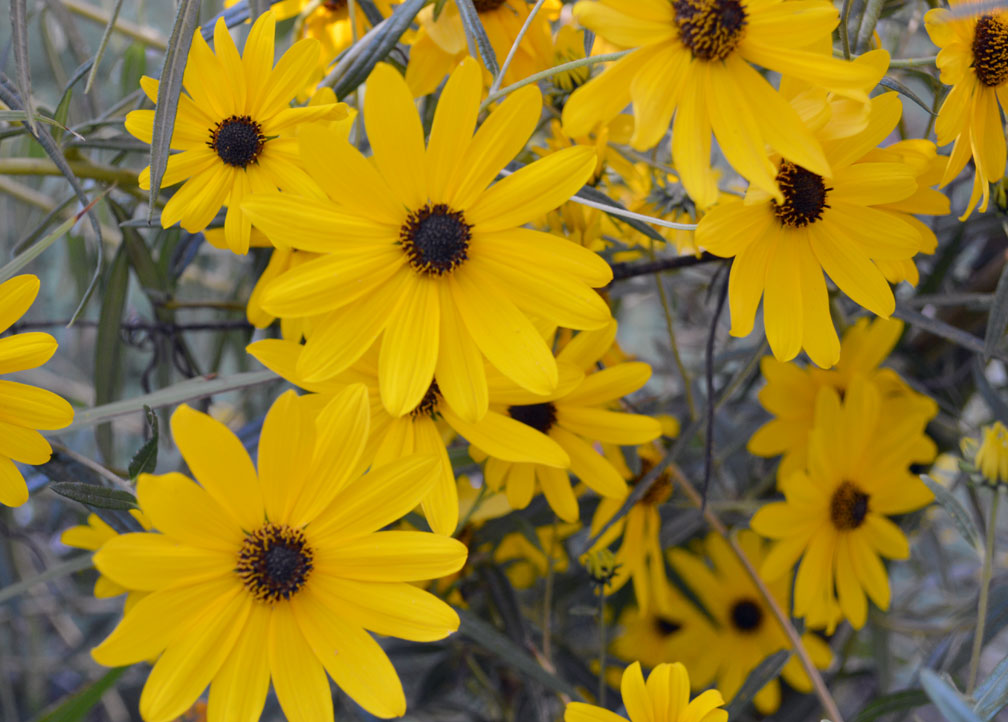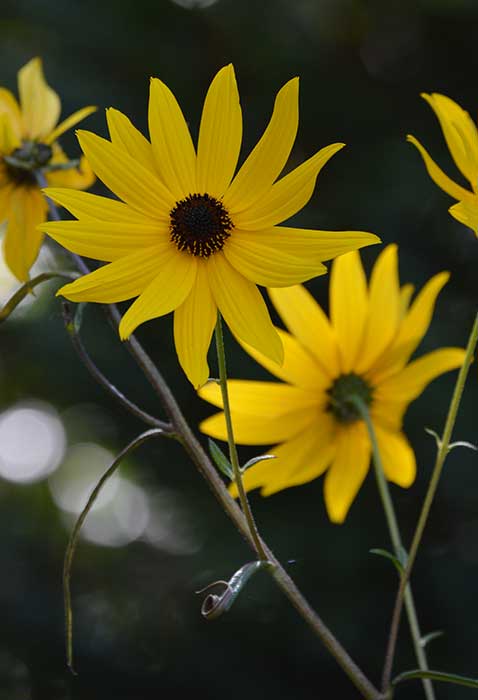In the middle of summer, the bright yellow, showy flowers of swamp sunflower light up my garden. This perennial’s flowers keep blooming into the fall. It’s late October, and I still have bright yellow flowers that add some fall color to my yard.
We have a patch in our backyard that stays wet most of the time. The neighbor’s yard and our front yard all drain back to this point. For years, we have fought it and tried to figure out what to do to fix it. This year, I decided to go with what I have, and I planted a moist soil garden filled with mostly native plants that like wet soils. This swamp sunflower is right in the middle of the planting.

Planting native swamp sunflowers in your garden can add color, particularly in the fall when not much else is blooming. Here are some recommendations on where to plant it and how to take care of it.
Plant Height
Also known as narrow-leaf sunflower, Helianthus angustifolius can grow to 8 feet tall. However, if you prune it back in the early summer, the plant will branch more, which means more flowers and a little less height. You might need to stake this plant, so it doesn’t fall over on adjacent plants.
Native Range and USDA Hardiness Zones
It is native to the eastern and southeastern U.S., from New York to Florida and Texas. It’s a low-maintenance plant and is hardy in USDA Hardiness zones 5 to 9. You can find this native plant in ditches along roads, wetlands, and other moist soil areas.

Soil Conditions
Swamp sunflower prefers moist soil but can handle drier soil conditions if you water it enough. Try it out and see how it works in your garden!
Light Requirements of Swamp Sunflower
This native plant prefers full sun but can tolerate part shade; you’ll see fewer flowers than a plant in full sun. Mine is planted in part-shade but receives afternoon sunlight, so it does pretty well in this location.
How to Propagate Swamp Sunflower
Propagate this plant by seed or by dividing the plant. Swamp sunflower spreads by roots and may form large clumps. You can divide these clumps for additional plants. Collect the seeds after the flowers are spent, generally in the fall. Plant the seeds after the risk of frost in the spring. Cover the seeds with a slight dusting of soil and ensure they are not covered by mulch. Water regularly.
Wildlife Benefits
Birds, butterflies, bees, and other pollinators feed on the flowers of swamp sunflowers. This plant is a larval host for the silvery checkerspot butterfly. Songbirds, mourning doves, small mammals, and quail feed on the plant’s seeds, as do deer. Swamp sunflower also supports several specialized bees.
